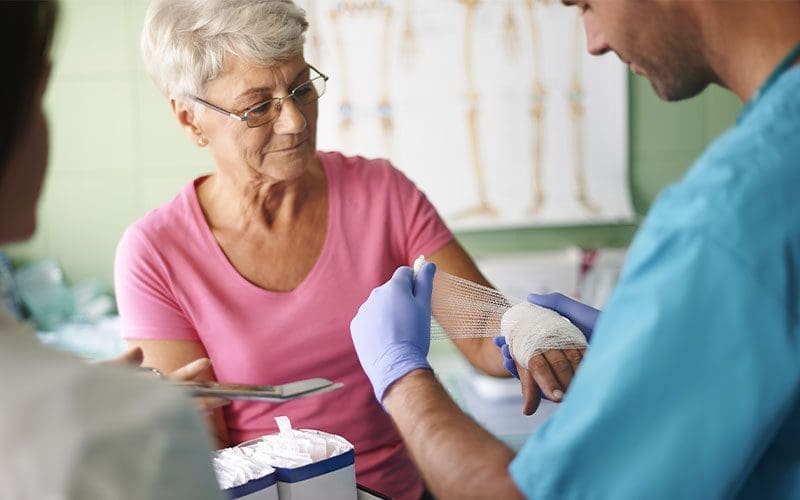
Published: March 07, 2019
Lymphedema Awareness in Women
Life After Breast Cancer
After the treatment of breast cancer, your body is under recovery from so much — surgery, anesthesia, perhaps multiple cycles of chemotherapy, or radiation. Post-treatment women face several challenges after breast cancer including fatigue, memory problems, menopausal symptoms, and more. One of the most common concerns after breast cancer treatment is lymphedema.
The lymph nodes near the breast are those that are affected during the treatment of breast cancer. During a mastectomy, some of the lymph nodes in the underarm may be removed. These lymph nodes may also become blocked from radiation therapy or from scar tissue post-surgery. Lymphedema occurs when lymph fluid collects in the arm (or other areas such as the hand, fingers, chest, etc.) causing it to swell. The swelling may vary, but with severe cases, it can cause pain, limit movement, and the appearance of the affected limb can be upsetting.
Medications and treatments are limited in their effectiveness; therefore, the best strategy is to prevent the problem from occurring.
Lymphedema Prevention Tips
- Keep your arm slightly out away from your body during the day.
- When you lie down, prop your arm on a pillow above the level of your heart to help drain fluid.
- Avoid using your arm and hand below the level of your heart for a long period of time.
- Make a fist or squeeze a stress ball repeatedly several times a day.
- Do not allow the affected arm to be used for blood pressure checks, blood samples, or injections.
- Do not wear anything that is tight on the arm or hand.
- Do not carry heavy packages, purses, or suitcases on the side of your injury.
- Take care in trimming cuticles and caring for your nails.
- Wear protective gloves when working in the garden, washing dishes, or using irritating chemicals such as hair dye.
- Be careful to avoid burns and cuts.
- Wash all cuts or injuries with anti-bacterial soap, apply medication, and a sterile bandage.
- Avoid sunburns and insect bites.
- Take care in shaving with a blade or use an electric razor for your underarm.
Treatments for Lymphedema
- Manual lymphatic drainage (massage)
- Bandaging
- Gentle Exercise
- Proper Skin Care
- Diet Education
- Home Self-Massage Techniques
- Fitting for Compression Garments
- Patient Education
Elevating an arm or leg that has swelling can help ease the drainage of lymph from the affected limb. Whenever possible, rest a swollen arm or leg on a comfortable surface, above the level of your heart. Don’t put pressure on your armpit or groin area, and don’t hold a limb up without support for very long, since this can increase swelling.
Gentle exercise can help reduce swelling. Using muscles during exercise naturally helps lymph fluid to circulate, which can reduce swelling. However, exercise also increases blood flow to the muscles being used, which can increase the amount of lymph fluid present. If you have swelling, it is important to properly bandage an affected limb before exercising. Ask your health care professional how to use a bandage for this purpose and what exercises are appropriate for your condition.
Lymphedema Therapy is available in Bucyrus and Galion, through the Avita Wound Centers and outpatient therapy departments. To schedule an appointment call:
Avita Therapy and Sports Medicine, Bucyrus: 419-562-1009
Galion Outpatient Therapy: 419-468-9194